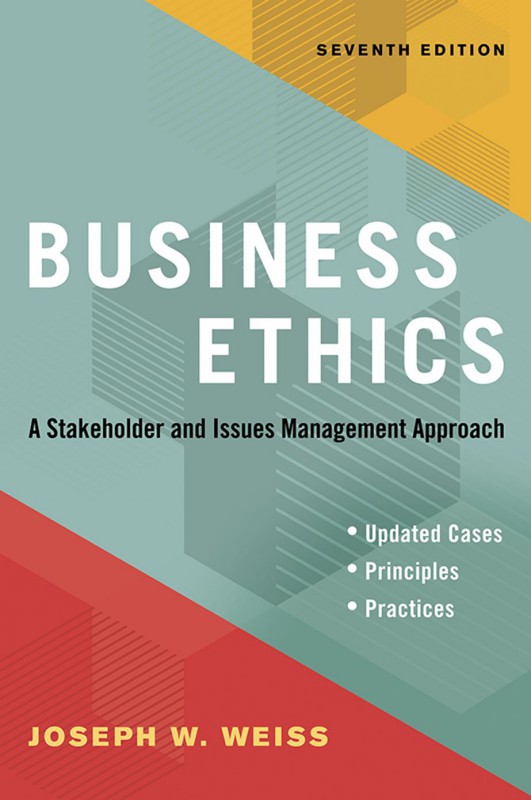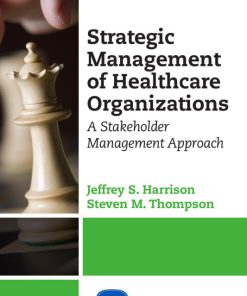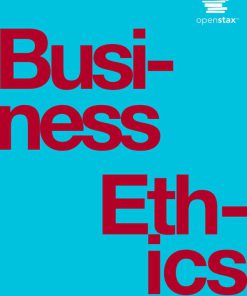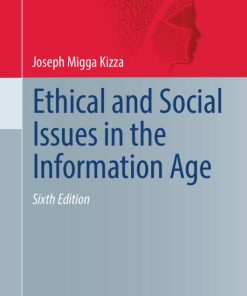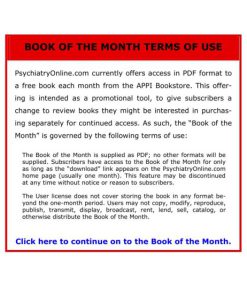Business Ethics A Stakeholder and Issues Management Approach 7th Edition by Joseph Weiss 1523091541 978-1523091546
$50.00 Original price was: $50.00.$25.00Current price is: $25.00.
Authors:Joseph W. Weiss; , Series:Management [800] , Author sort:Weiss;, Joseph W. , Languages:Languages:eng , Published:Published:Sep 2021 , Publisher:BK
Business Ethics A Stakeholder and Issues Management Approach 7th Edition by Joseph Weiss – Ebook PDF Instant Download/Delivery. 1523091541, 978-1523091546
Full download Business Ethics A Stakeholder and Issues Management Approach 7th Edition after payment
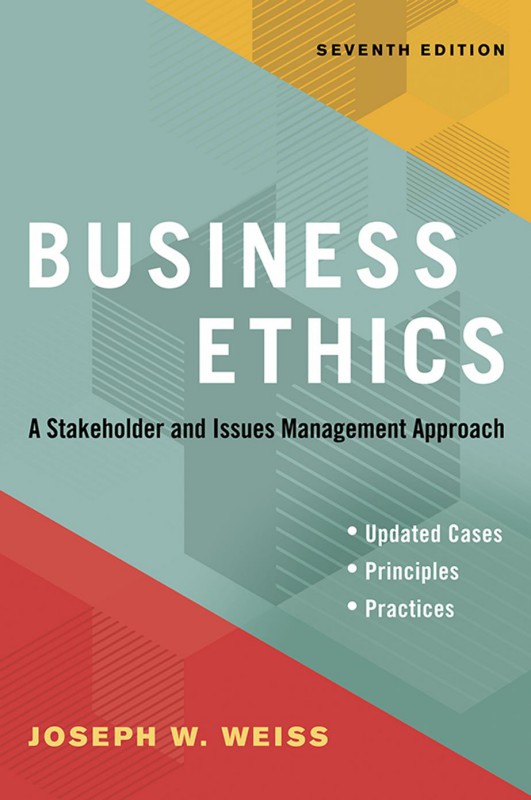
Product details:
ISBN 10: 1523091541
ISBN 13: 978-1523091546
Author: Joseph W. Weiss
Joseph Weiss’s Business Ethics is a pragmatic, hands-on guide for determining right and wrong in the business world. To be socially responsible and ethical, Weiss maintains, businesses must acknowledge the impact their decisions can have on the world beyond their walls. An advantage of the book is the integration of a stakeholder perspective with an issues and crisis management approach so students can look at how a business’s actions affect not just share price and profit but the well-being of employees, customers, suppliers, the local community, the larger society, other nations, and the environment.
Weiss includes twenty-three cases that immerse students directly in contemporary ethical dilemmas. Eight new cases in this edition include Facebook’s (mis)use of customer data, the impact of COVID-19 on higher education, the opioid epidemic, the rise of Uber, the rapid growth of AI, safety concerns over the Boeing 737, the Wells Fargo false saving accounts scandal, and plastics being dumped into the ocean.
Several chapters feature a unique point/counterpoint exercise that challenges students to argue both sides of a heated ethical issue. This edition has eleven new point/counterpoint exercises, addressing questions like, Should tech giants be broken apart? What is the line between free speech and dangerous disinformation? Has the Me Too movement gone too far? As with previous editions, the seventh edition features a complete set of ancillary materials for instructors: teaching guides, test banks, and PowerPoint presentations.
Business Ethics A Stakeholder and Issues Management Approach 7th Table of contents:
Chapter 1 Business Ethics, the Changing Environment, and Stakeholder Management
1.1 Business Ethics and the Changing Environment
Seeing the “Big Picture”
Point/CounterPoint
Environmental Forces and Stakeholders
Stakeholder Management Approach
1.2 What Is Business Ethics? Why Does It Matter?
What Is Ethics, and What Are the Areas of Ethical Theory?
Unethical Business Practices and Employees
Why Does Ethics Matter in Business?
Working for the Best Companies
1.3 Levels of Business Ethics
Point/CounterPoint
Asking Key Questions
Ethical Insight 1.1
1.4 Five Myths about Business Ethics
Myth 1: Ethics Is a Personal, Individual Affair, Not a Public or Debatable Matter
Myth 2: Business and Ethics Do Not Mix
Myth 3: Ethics in Business Is Relative
Myth 4: Good Business Means Good Ethics
Myth 5: Information and Computing Are Amoral
1.5 Why Use Ethical Reasoning in Business?
1.6 Can Business Ethics Be Taught?
1.7 Plan of the Book
Chapter Summary
Questions
Exercises
Real-Time Ethical Dilemma
Cases
1. Education Pushed to the Brink: How Covid-19 Is Redefining Recruitment and Admissions Decisions
2. Classic Ponzi Scheme: Bernard L. Madoff Investment Securities LLC: Wall Street Trading Firm
3. Cyberbullying: Who’s to Blame and What Can Be Done?
Notes
Chapter 2 Ethical Principles, Quick Tests, and Decision-Making Guidelines
2.1 Ethical Reasoning and Moral Decision Making
Three Criteria in Ethical Reasoning
Moral Responsibility Criteria
2.2 Ethical Princi ples and Decision Making
Ethical Insight 2.1
Utilitarianism: A Consequentialist (Results-Based) Approach
Universalism: A Deontological (Duty-Based) Approach
Rights: A Moral and Legal (Entitlement-Based) Approach
Justice: Procedures, Compensation, and Retribution
Virtue Ethics: Character-Based Virtues
The Common Good
Ethical Relativism: A Self-Interest Approach
Immoral, Amoral, and Moral Management
Point/CounterPoint
2.3 Four Social Responsibility Roles
Point/CounterPoint
2.4 Levels of Ethical Reasoning and Moral Decision Making
Personal Level
Organizational Level
Industry Level
Societal, International, and Global Levels
2.5 Identifying and Addressing Ethical Dilemmas
Ethical Insight 2.2
Moral Creativity
Ethical Dilemma Prob lem Solving
12 Questions to Get Started
2.6 Individual Ethical Decision-Making Styles
Communicating and Negotiating across Ethical Styles
2.7 Quick Ethical Tests
2.8 Concluding Comments
Back to Louise Simms
Chapter Summary
Questions
Exercises
Real-Time Ethical Dilemma
Cases
4. Ford’s Pinto Fires: The Retrospective View of Ford’s Field Recall Coordinator
5. Jerome Kerviel: Rogue Trader or Misguided Employee? What Really Happened at the Société Générale?
6. Samuel Waksal at ImClone
Notes
Chapter 3 Stakeholder and Issues Management Approaches
3.1 Stakeholder Theory and the Stakeholder Management Approach Defined
Stakeholders
Stakes
3.2 Why Use a Stakeholder Management Approach for Business Ethics?
Stakeholder Theory: Criticisms and Responses
3.3 How to Execute a Stakeholder Analysis
Taking a Third-Party Objective Observer Perspective
Role of the CEO in Stakeholder Analysis
Summary of Stakeholder Analysis
3.4 Negotiation Methods: Resolving Stakeholder Disputes
Stakeholder Dispute Resolution Methods
3.5 Stakeholder Management Approach: Using Ethical Principles and Reasoning
3.6 Moral Responsibilities of Cross-Functional Area Professionals
Marketing and Sales Professionals and Managers as Stakeholders
R&D, Engineering Professionals, and Managers as Stakeholders
Accounting and Finance Professionals and Managers as Stakeholders
Public Relations Managers as Stakeholders
Human Resources Managers as Stakeholders
Summary of Managerial Moral Responsibilities
3.7 Issues Management: Integrating a Stakeholder Framework
What Is an Issue?
Ethical Insight 3.1
Other Types of Issues
Stakeholder and Issues Management: “Connecting the Dots”
Moral Dimensions of Stakeholder and Issues Management
Types of Issues Management Frameworks
3.8 Managing Crises
Ethical Insight 3.2
How Executives Have Responded to Crises
Crisis Management Recommendations
Chapter Summary
Questions
Exercises
Real-Time Ethical Dilemma
Cases
7. The BP Deepwater Horizon Explosion and Oil Spill: Crisis and Aftermath
8. Ethics and AI (Artificial Intelligence): Opportunities and Threats
9. Genetic Discrimination
Notes
Chapter 4 The Corporation and External Stakeholders: Corporate Governance: From the Boardroom to the Marketplace
4.1 Managing Corporate Social Responsibility in the Marketplace
Ethical Insight 4.1
Free-Market Theory and Corporate Social Responsibility
Problems with the Free-Market Theory
Intermediaries: Bridging the Disclosure Gap
Point/CounterPoint
Ethical Insight 4.2
4.2 Managing Corporate Responsibility with External Stakeholders
The Corporation as Social and Economic Stakeholder
The Social Contract: Dead or Desperately Needed?
Balance between Ethical Motivation and Compliance
Covenantal Ethic
The Moral Basis and Social Power of Corporations as Stakeholders
Corporate Philanthropy
Managing Stakeholders Profitably and Responsibly: Reputation Counts
Ethical Insight 4.3
4.3 Managing and Balancing Corporate Governance, Compliance, and Regulation
Ethical Insight 4.4
Best Corporate Board Governance Practices
Sarbanes-Oxley Act
Pros and Cons of Implementing the Sarbanes-Oxley Act
The Federal Sentencing Guidelines for Organizations: Compliance Incentive
4.4 The Role of Law and Regulatory Agencies and Corporate Compliance
Why Regulation?
Laws and U.S. Regulatory Agencies
Laws Protecting Consumers
Laws Protecting the Environment
4.5 Managing External Issues and Crises: Lessons from the Past (Back to the Future?)
Chapter Summary
Questions
Exercises
Real-Time Ethical Dilemma
Cases
10. Conscious Capitalism: What Is It? Why Do We Need It? Does It Work?
11. Uber and the Ride-Sharing Economy
12. The Crisis at Wells Fargo Bank: Then and Now
Notes
Chapter 5 Corporate Responsibilities, Consumer Stakeholders, and the Environment
5.1 Corporate Responsibility toward Consumer Stakeholders
Corporate Responsibilities and Consumer Rights
Consumer Protection Agencies and Law
5.2 Corporate Responsibility in Advertising
Ethics and Advertising
The Federal Trade Commission and Advertising
Pros and Cons of Advertising
Ethical Insight 5.1
Point/CounterPoint
Advertising and Free Speech
Paternalism, Manipulation, or Free Choice?
5.3 Controversial Issues in Advertising: The Internet, Children, Tobacco, and Alcohol
Advertising and the Internet
The Thin Line between Deceptive Advertising, Spyware, and Spam
Advertising to Children
Protecting Children
Tobacco Advertising
The Tobacco Controversy Continues
Alcohol Advertising
Ethical Insight 5.2
5.4 Managing Product Safety and Liability Responsibly
How Safe Is Safe? The Ethics of Product Safety
Product Liability Doctrines
Legal and Moral Limits of Product Liability
Product Safety and the Road Ahead
5.5 Corporate Responsibility and the Environment
The Most Significant Environmental Problems
Causes of Environmental Pollution
Enforcement of Environmental Laws
The Ethics of Ecol ogy
Green Marketing, Environmental Justice, and Industrial Ecology
Rights of Future Generations and Right to a Livable Environment
Recommendations to Managers
Chapter Summary
Questions
Exercises
Real-Time Ethical Dilemma
Cases
13. For-Profit Universities: Opportunities, Issues, and Promises
14. Fracking: Drilling for Disaster?
15. Neuromarketing
16. Opioid Crisis in America
Notes
Chapter 6 The Corporation and Internal Stakeholders: Values-Based Moral Leadership, Culture, Strategy, and Self-Regulation
6.1 Leadership and Stakeholder Management
Defining Purpose, Mission, and Values
Ethical Insight 6.1
Leadership Stakeholder Competencies
Example of Companies Using Stakeholder Relationship Management
Ethical Insight 6.2
Spiritual Values, Practices, and Moral Courage in Leading
Failure of Ethical Leadership
Ethical Dimensions of Leadership Styles
How Should CEOs as Leaders Be Evaluated and Rewarded?
6.2 Organizational Culture, Compliance, and Stakeholder Management
Organizational Culture Defined
High-Ethics Companies
Weak Cultures
Point/CounterPoint
6.3 Leading and Managing Strategy and Structure
Organizational Structure and Ethics
Boundaryless and Networked Organizations
6.4 Leading Internal Stakeholder Values in the Organization
6.5 Corporate Self-Regulation and Ethics Programs: Challenges and Issues
Ethical Insight 6.3
Organizations and Leaders as Moral Agents
Ethics Codes
Codes of Conduct
Problems with Ethics and Conduct Codes
Ombuds and Peer-Review Programs
Is the Organization Ready to Implement a Values-Based Stakeholder Approach? A Readiness Checklist
Chapter Summary
Questions
Exercises
Real-Time Ethical Dilemmas
Cases
17. Corporate Responsibility in the Age of Big Data: Facebook’s Obligations to Protect Consumers
18. Boeing: The 737 “MAX-imum” Mistake
Notes
Chapter 7 Employee Stakeholders and the Corporation
7.1 Employee Stakeholders in the Changing Workforce
Point/CounterPoint
The Aging Workforce
Generational Differences in the Workplace
Steps for Integrating a Multigenerational Workforce
Ethical Insight 7.1
Women in the Workforce
Same-Sex Marriages, Civil Unions, Domestic Partnerships, and Workforce Rights
The Increasing Cultural Mix: Minorities Are Becoming the Majority
Educational Weaknesses and Gaps
Point/CounterPoint
Mainstreaming Disabled Workers
Balancing Work and Life in Families
7.2 The Changing Social Contract between Corporations and Employees
Good Faith Principle Exception
Public Policy Principle Exception
Implied Contract Exception
7.3 Employee and Employer Rights and Responsibilities
Moral Foundation of Employee Rights
The Principle of Balance in the Employee and Employer Social Contract and the Real ity of Competitive Change
Rights from Government Legislation
Employer Responsibilities to Employees
Employee Rights and Responsibilities to Employers
Employee Rights in the Workplace
Other Employee Rights and Obligations to Employers
Ethical Insight 7.2
7.4 Discrimination, Equal Employment Opportunity, and Affirmative Action
Discrimination
Equal Employment Opportunity and the Civil Rights Act
Age and Discrimination in the Workplace
Comparable Worth and Equal Pay
Affirmative Action
Ethics and Affirmative Action
Reverse Discrimination: Arguments against Affirmative Action
Ethical Insight 7.3
7.5 Sexual Harassment in the Workplace
What Is Sexual Harassment?
Point/CounterPoint
Who Is Liable?
Tangible Employment Action and Vicarious Liability
Sexual Harassment and Foreign Firms in the United States
7.6 Whistle-Blowing versus Orga nizational Loyalty
When Whistle-Blowers Should Not Be Protected
Factors to Consider before Blowing the Whistle
Managerial Steps to Prevent External Whistle-Blowing
Chapter Summary
Questions
Exercises
Real-Time Ethical Dilemma
Case
19. Women on Wall Street: Fighting for Equality in a Male-Dominated Industry
Notes
Chapter 8 Business Ethics and Stakeholder Management in the Global Environment
8.1 The Connected Global Economy and Globalization
Ethical Insight 8.1
Globalization and the Forces of Change
Point/CounterPoint
8.2 Managing and Working in a Different Global World: Professional and Ethical Competencies
Shared Leadership in Teams’ Competency
Ethical Insight 8.2
Global Ethical Values and Princi ples
Know Your Own Cultural and Core Values, Your Organization’s, and Those with Whom You Are Working
Cross-Cultural Business Ethical Issues Professionals May Experience
8.3 Societal Issues and Globalization: The Dark Side
International Crime and Corruption
Economic Poverty and Child Slave Labor
The Global Digital Divide
Westernization (Americanization) of Cultures
Loss of Nation-State Sovereignty
8.4 Multinational Enterprises as Stakeholders
Power of MNEs
8.5 Triple Bottom Line, Social Entrepreneurship, and Microfinancing
The Triple Bottom Line
Social Entrepreneurs and Social Enterprises
Microfinancing
8.6 MNEs: Stakeholder Values, Guidelines, and Codes for Managing Ethically
Employment Practices and Policies
Consumer Protection
Environmental Protection
Political Payments and Involvement
Basic Human Rights and Fundamental Freedoms
8.7 Cross-Cultural Ethical Decision Making and Negotiation Methods
External Corporate Monitoring Groups
Individual Stakeholder Methods for Ethical Decision Making
Four Typical Styles of International Ethical Decision Making
Hypernorms, Local Norms, and Creative Ethical Navigation
Chapter Summary
Questions
Exercises
Real-Time Ethical Dilemmas
Cases
20. Plastic in the Ocean: An International Climate Change Problem
21. Sweatshops: Not Only a Global Issue
22. The U.S. Industrial Food System
People also search for Business Ethics A Stakeholder and Issues Management Approach 7th:
business & society ethics sustainability & stakeholder management
what is ethical management in business
in business ethics and legality are one in the same
stakeholders in ethical issues
You may also like…
eBook PDF
Nursing Ethics A Virtue Based Approach 1st Edition by Alan Armstrong 0230506887 9780230506886

